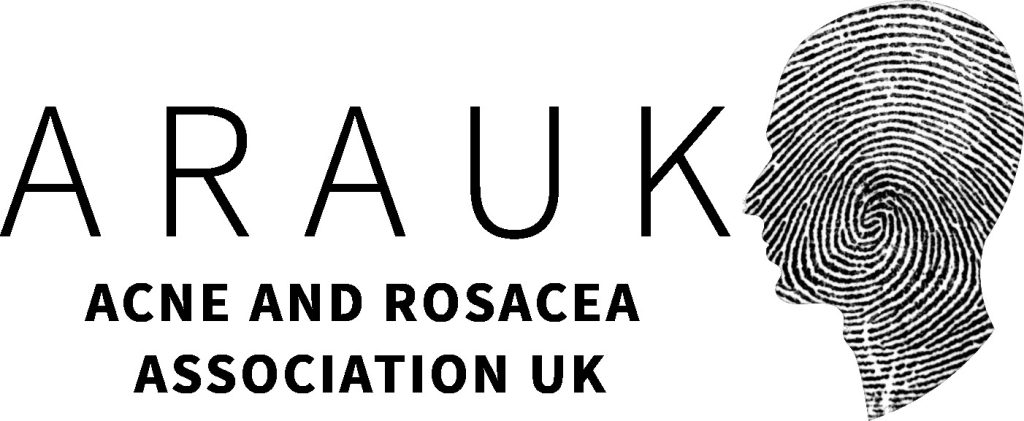What is Rosacea?
Rosacea is a long term skin condition, it is most commonly characterised with redness and visible blood vessels. As well as affecting the face, the eyes can also be affected. Other symptoms associated with the condition are: small red bumps; these may or may not be pus filled, thickening of the skin and sensitivity.
Rosacea can often be confused with other skin conditions such as acne. Although Rosacea is a long term condition, there may be times where symptoms reduce and times when symptoms can flare. All skin types can be affected however it is more common in fairer complexions.

The 4 Types of Rosacea
Type 1– Erythematotelangiectatic (Vascular)
Facial flushing and redness
Type 2– Papulopustular (Inflammatory)
Redness with papules and/or pustules
Type 3– Phymatous
Skin thickening bumpy texture (includes Rhinophyma- a swelling/enlargement of the nose)
Type 4– Ocular
Affects the eyes, they may be irritated, watery and bloodshot
We can only treat types 1 and 2, for types 3 and 4 it is advised to visit your doctor or dermatologist.
What are the symptoms of Rosacea?
Facial Redness
Redness is most commonly found in the centre of the face, across the nose and cheeks. Broken capillaries can be visible. Skin can become flushed easily.
Bumps
Red bumps may be filled with pus. These spots usually differ from acne however it is possible to have acne as well as Rosacea.
Swelling
With Rhinophyma (a symptom of subtype 3 Rosacea) the nose in particular is swollen and increased in size due to the swelling of skin tissues.
Eye problems
With Ocular Rosacea; eyes may be red, irritated and dry.
What causes Rosacea?
The exact cause isn’t fully determined however the following can all contribute:
- Genetics
- Environmental factors
- Immune system
- Bacteria in the gut
What causes a flare up?
- Sun exposure
- Spicy foods
- Alcohol
- Stress
- Overheating
- Hot drinks
- Skin care products that come into contact with the skin, especially those with Sodium Lauryl Sulphate (common in shampoo!)
- Cold weather
- Exercise
How can I reduce my Rosacea?
By avoiding your known triggers you can reduce the amount of flare ups you have. Using skincare to reduce inflammation and treat Rosacea symptoms as well as a good treatment plan, your flare ups and symptoms can be reduced. Sometimes it is necessary to visit a doctor as an antibiotic may be required. It is important to wear broad spectrum SPF. SPF explained and the importance of Zinc
UVA and UVB rays can cause inflammation to the skin, worsening Rosacea symptoms. Always ensure you wear your SPF every day and reapply when necessary.
https://shop.beyondskinclinic.com/product/heliocare-360-mineral-fluid-spf-50
Treatments for Rosacea
Because Rosacea symptoms can differ from person to person it’s not a one size fits all approach. During your consultation, we can advise you on which type of treatment and how many are needed.
Laser Redness Reduction
Using an ND YAG medical grade laser by Cynosure we can reduce redness, boost collagen to improve skin quality and reduce the appearance of broken capillaries. Below are before and after pictures from Laser Redness Reduction treatments we have carried out. There is no down time with this treatment.
Treatment time 45minutes.


LED Light Therapy
Light Emitting Diode technology uses different wavelengths to treat different skin conditions. Each wavelength (depth of skin penetration) creates a different coloured light. For Rosacea treatment we use the Yellow Light. This is the deepest penetrating light, it reduces Rosacea symptoms as well as promoting wound healing and collagen boosting.
Treatment time 45 minutes.

Epionce Lite Refresh
Gently exfoliates dead skin cells to reveal a brighter, smoother complexion. Using 30% Malic Acid and 5% Salicylic Acid, it is more gentle than other skin peels. The peel also contains healing extracts such as willow bark so it’s great if your skin is inflamed. The strength can be increased throughout your course of treatments. After each peel a soothing mask is applied and worked into the skin with our signature cooling globes to further reduce inflammation.
Treatment time 40 minutes.

Homecare for Rosacea
No treatment plan is complete without a homecare regime. Again as we treat everyone on a case by case basis, at each consultation we advise a regime for you. Some of these products can include:
Epionce
Founded by dermatologist Dr. Carl R. Thornfeldt, Epionce integrates 20+ years of research into a product line with proven results. Reducing inflammation, repairing your skins barrier and reducing redness are some of the ways Epionce can work to improve your skin, reducing Rosacea symptoms and flare ups.

SkinCeuticals Phyto Corrective Gel
This is one of our favourites, this serum includes botanical extracts cucumber and thyme with Hyaluronic acid to hydrate whilst calming the skin. Think of it as a hydrator for sensitive skin.

Dermaquest Delicate Soothing Serum
This serum will nourish, hydrate and calm your skin. Particularly good after treatments, includes Copper to strengthen the skin.
https://shop.beyondskinclinic.com/product/dermaquest-delicate-soothing-serum
Advanced Nutrition Programme-
Skin Youth Biome
As gut health can be responsible for Rosacea and other inflammatories in our skin, boosting your gut health will improve your skins appearance. It contains a unique formula combining ‘good bacterias’ with vitamin C.
https://shop.beyondskinclinic.com/product/skin-youth-biome
During your Skincare Online Consultation, our Skin Therapists can advise which combination of treatments and home care will work best for you, building a package for your journey to better skin.





